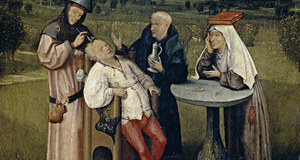Featured Article:The Forgotten Illnesses: The Mental Health Movements in Modern America
By
2016, Vol. 8 No. 07 | pg. 1/2 | »
IN THIS ARTICLE
The modern world has made incredible bounds towards generating social movements to support disenfranchised groups. When thinking of social movements, people tend to conjure the image of visibly alienated groups that have become vocal in order to bring attention to and eventually change the systematic neglect they experience. The mental health movement (MHM), which has made notable progress over the past 50 years, only receives minimal attention from the larger society. Lipsky (1968: 1146-1147) argued that it is essential for a social movement to receive attention from the mass media to be influential, but the mental health movement has never come to the fore as a major public social movement. Despite this fact, since its roots in the 1970s, the mental health movement has established numerous social movement organizations (SMOs) throughout the United States and Europe. Modern movements concerning mental health cover a wide variety of mental diseases, disorders, and afflictions. Their goals frequently include changing public perceptions of mental illnesses, ending the imprisonment of mentally ill people in mental hospitals and prisons instead of rehabilitation centers, and convincing the state to create legislation to benefit the mentally ill. Focusing on the American mental health movement, I discuss the birth of the movement, its current ideologies and strategies, and its future in the United States. Considering that the National Institute of Mental Health (“Any Mental Illness…,” n.d.) estimates that 18.5% of all adult Americans suffer from a mental illness, the mental health movement stands as a legitimate social movement that remains relevant to this day. I. Institutionalization of Mental Health in HistoryBeginning in the 1840s, both the United States and the United Kingdom experienced what Lawton-Smith and McCulloch (2015) call the “era of asylums.” During this time period, advocates for those struggling with mental health issues called for government-funded mental asylums to protect and house the mentally ill. One such advocate, Dorothea Dix, fought until the United States opened and funded 32 psychiatric hospitals to be run by the state (“Module 2”). This early movement received incredible support from the government to the extent of the passage of legislation, such as England’s 1890 Lunacy Act; the institutionalization of the mentally ill became so prevalent that 0.4% of England’s population was accommodated in the asylum system in the mid-1950s. (Lawton-Smith and McCulloch, n.d.: 2). Though this impetus for the institutionalization of mental patients was spurred by a wish to support the mentally ill, advocates for mental health rights realized that institutionalization of the issue was keeping the mentally ill on the periphery of society.The emergence of the Mental Hygiene movement, which later became known as the Mental Health movement, framed their early ideologies around the “idea that mental health is a government responsibility” (Pols, 2005). With this responsibility came a continued imperative for involuntary commitment of the mentally ill. During these formative years of the MHM, there were those who believed that handing responsibility of mental health care to the government would both reduce the agency of those struggling with mental illness, and that the movement should be concerned with returning agency and public acceptance to this disadvantaged group (Pols, 2005). There was also concern that emphasizing the aspect of illness as a detriment to health would lead to the attempt to prevent mental illness instead of focusing on patients. Pols (Pols, 2005) extrapolates the complicated relationship between members of the early MHM, as the wish for full government responsibility over mental health treatment and the freedom of patients were held simultaneously by many. Very little compromise was made in this area until the formation of the National Institute for Mental Health (NIMH) in 1946. NIMH conducted a six-year study across the United States that ended in 1961 which prompted a shift from mental hospitals to community care, which created a greater move in societal notions of mental illness and the agency of individuals (Pols, 2005). The release of movies where mental illness was central to the plot, such as One Flew over the Cuckoo’s Nest and Sybil in the respective years 1975 and 1976, became a major precipitating event for the MHM. These movies allowed the public a glimpse of the struggles of mental illnesses, whether the mentally ill were in the supposed sanctuary of an asylum or faced the illnesses while at work. However, they also reinforced a burgeoning public perception of the mentally ill as crazy or deranged, even if this was not the intended consequence. In other words, members of the MHM had to frame mental illnesses as more than stereotypes depicted in popular media. Movies often encompass stereotypes of the mentally ill as narcissistic, violent, manipulative, and unable to fit into society (Hyler, Gabbard, and Schneider, 1991). This causes a conflict between well-intentioned media that attempt to portray the mentally ill as part of society and the stereotypes on which filmmakers depend to prove that specific characters are indeed mentally ill. In this way, movies act as precipitating events of the MHM not simply because of the portrayal of stereotypes or misinterpretations of the mentally ill, but because they make them visible within society. The creation of community mental health centers (CMHC) in the 1950s, which were meant to provide “psychiatric assistance, consultation, and prevention,” became one of the major accomplishments of the MHM in the 20th century (Pols, 2005). Controversy did exist over the correct use of CMHCs during their formative years. While some held that these centers should supply curative techniques to mental patients, others argued for an inclusive approach to mental health that encompassed consultations and gave patients a sense of choice. President John F. Kennedy’s Community Mental Health Act of 1963 supported the comprehensive approach to mental health and provided funding to the programs. These CMHCs were generally used to support people with mental illnesses who were no longer involuntarily committed to mental asylums and who might not have support structures outside of what the government had provided. This step became a vital component to forwarding the deinstitutionalization of mental health and instead putting it in the hands of the individuals and their communities. Deinstitutionalization of the mentally ill came to reflect the neoliberal ideas that followed in the late 1970s and 1980s. Neoliberalism, which calls for a withdrawal of government intervention in the economy and the personal lives of individuals, became a major component for the extraction of government efforts and funds out of mental health. For the MHM, deinstitutionalization was best represented by the reduction of large psychiatric hospitals and the treatment of mental conditions in traditional hospitals (Morrow, Dagg, & Manager, 2008: 2). This was a major step towards increasing the visibility of the mentally ill by allowing them treatment in the public hospital. With this came a larger responsibility for care in the community and family, a factor which became a potential financial burden. Structural strain then occurred due to added financial burden that taking care of mental illnesses could bring. The apparent compromise between neoliberals and members of the MHM both shared the goal of giving agency back to the individual, though neoliberals preferred to look at the costs deinstitutionalization would save the government (Morrow, Dagg, & Manager, 2008: 2). II. The Beliefs, Goals, and Proponents of the Mental Health MovementOne of the fundamental beliefs of the MHM is that those suffering from mental illnesses are individuals, whether they are psychiatric patients or the one of the twenty percent of Americans who experience a diagnosable mental disorder (Pols, 2005; Obama, 2015). As a reformative movement, mental health advocates emphasize relatively minute societal changes that depend largely on changes in the political structure. In this way, many view the MHM as a “typical social reform movement” that stands in opposition to the modern condition of turning individuals into objects (Pols, 2005). This often implies that the group, specifically the larger society, must come before the individual, and that individuals such as those struggling with mental conditions are a burden upon the society. Thus, both the families of and those diagnosed with mental disorders are often burdened with the medical costs and the struggles of a condition that is often out of their control. By being viewed by members of society as individuals, people with mental conditions can gain a sense of agency, which is often proposed as a crucial step towards overcoming societal stigma. Another fundamental belief of the proponents of the MHM is the wish for solidarity among the disenfranchised individuals suffering from mental illnesses that are often perceived as detrimental characteristics to society in general. This solidarity emulates Tilly’s notion of unity as central to social movements (Collins, 2010). The members of the MHM share the belief that mental illnesses can be treated as conditions with which people can cope, not simply as obstacles that prevent any attempt at productivity within a society (About NAMI, n.d.). This became an issue of framing for the movement, as the use of phrases such as “special needs” are specifically avoided by members of the movement because they insinuate that mental illnesses prevent successful integration to society. It is understood that some individuals with mental conditions do necessitate special attention or have specific requirements to thrive, especially at young ages. Despite this fact, the MHM works to prove that these individuals can integrate into society and succeed without the need to be cosseted. Sociologists studying the stigmatization of mental illnesses came to the fore as proponents of the MHM beginning in the early 1960s. Michel Foucault, a French sociologist and philosopher, published his first major work Madness and Civilization in 1961. This work depicts a historical transition within Western societies from the cultural confinement of putting “madmen” on a “ship of fools,” where those suffering from mental illness could live alone on an island away from society, to the institutional confinement of the mentally ill in an asylum away from the city itself (Eisenhauer, 2008). Erving Goffman, known as the father of dramaturgical analysis, released his work Asylums: Essays on the Social Situation of Mental Patients and Other Inmates in 1961, the same year as Foucault’s work. Thomas Scheff, an American sociologist interested in emotions on a macro scale, published works on social perceptions and roles of mental illness in the late 1960s. Scheff (1999) argues against a purely biopsychiatric etiology, classification, and treatment of mental illnesses. Sociologists researching mental illness and bringing attention to the issue within academia gave the MHM validation that their struggle was indeed real and academic theory on which to base the defense of the mentally ill as well as giving a sense of worthiness to the movement (Collins, 2010). Research conducted by these early sociologists contributed to the modern goals of the MHM. Through his study of the historical institutionalization of madness, Foucault (1988: 42) found that involuntary commitment of the mentally ill is portrayed “for their own good” while it was instead a matter of policing who was fit to be a part of the society. Visible mental illness became a state-legitimized stigma. Similarly, Scheff (1999) considered the public shame that surrounds mental illnesses and how this led to a legitimization of involuntary commitment. Though deinstitutionalization had decreased the rate of involuntary commitment for those with mental conditions, there was still a stigma felt towards mental illness and those who experienced the conditions. These findings contributed to the MHM by making visible the tactics used by historic systems to disenfranchise sufferers of mental conditions. Eventually, a major goal of the movement became combatting involuntary commitment of individuals to mental asylums. While this issue is not as prevalent as it was during the age of asylums, involuntary commitment is still legal in within specific parameters set by each state (“Know the Laws,” 2015). The laws surrounding this issue attempt to find a precarious balance between the agency of the individual and the potential for self-harm and harm to others that could stem from the mental illness. Proponents of the MHM tend to acknowledge the necessity of these laws but point out the potential for misuse that resides within the ability to involuntarily commit someone who may be seen societally as a burden (Scheff, 1999). Action towards repealing these laws are not shared by the majority of the MHM, but the understanding of these laws and their potential abating of an individual’s agency are notable talking points for the movement. For the movement to prosper, the MHM has concentrated attention towards making mental illnesses visible within society so as to legitimize treatments. Because it can be disadvantageous to have visible impairments in a society that promotes perfectionism in the workplace and in individual efforts, it becomes important to acknowledge the widespread existence of mental conditions. By explicitly showing the public that mental illnesses affect a large proportion of adult Americans, it legitimizes mental conditions as more than a myth or an excuse for special treatment. A prevalent example of this issue is the argument over the existence of attention deficit hyper disorder (ADHD). Even professionals in the various fields of medicine proclaim that ADHD is nonexistent because the children on medications for ADHD “are normal children” (Baughman, 2001). This blatantly implies that children who do have attention disorders are not normal. By discrediting mental disorders, the issues faced by those who truly do suffer with mental disorders are demeaned. It becomes an imperative goal for the MHM to constitute mental conditions as legitimate. Popular portrayals of the mentally ill support their legitimized stigmatization, which Corrigan (1998: 213-217) argues contributes the dual effect of causing those suffering from mental illness to internalize shame towards their illness and convincing people within society to fear mental illness. In these ways, mental illness becomes a source of entertainment. The example proposed by Eisenhauer (2008) is that of the Vermont Teddy Bear in a straightjacket with the embroidered diagnosis of “Crazy for You” to reinforce this notion that mental illness is not a serious issue worthy of respect from the people within society. Though the blatant intention may not be to make light of those suffering from mental illnesses, typecasts of mental illnesses themselves are used for entertainment value. This cultural trope extends itself to popular media, especially in instances where the antagonist of a story has an obvious mental disorder that often drives them to become the adversary of a sane, good person. Mental health SMOs have to actively combat this stereotypical frame with portrayals of mental illness as noninvasive, though this is obviously quite difficult to accomplish. Participants in the MHM are diverse and range across race, gender, and class. Mental illnesses affect most groups in relatively similar ways, though there is a gender gap that has raised concern among some women (“Any Mental Illness…,” n.d.). The diversity of this group is founded on the pervasiveness of mental illnesses in adult Americans. NAMI prides itself on the fact that it began as a grassroots movement of concerned families brought together by a concern for loved ones struggling with mental illnesses (“About NAMI,” n.d.). While most major mental health SMOs target their resources towards lower class individuals, mental illnesses affect people regardless of class and bring people of varied backgrounds to their ranks. The members of the movement are not confined to those who have mental illnesses. However, as with many social movements, members of the MHM tend to be disenfranchised and virtually invisible in the larger society. As stated by McAdam (2015: 68-69) in his discussions of the Freedom Summer of 1963, movements are likely to receive greater attention and backing when supported by middle-to-upper class white people who have the biographical availability necessary to propel the movement forward. These higher class white individuals bring necessary resources to the movement that can be allocated to issues such as fundraising, getting media attention, and supporting those in the movement who lack the resources to maintain themselves. Support from highly visible and well-respected individuals, such as presidents or celebrities, who may not be actively part of the MHM can significantly benefit the movement and its participants.Continued on Next Page » Suggested Reading from Inquiries Journal
Inquiries Journal provides undergraduate and graduate students around the world a platform for the wide dissemination of academic work over a range of core disciplines. Representing the work of students from hundreds of institutions around the globe, Inquiries Journal's large database of academic articles is completely free. Learn more | Blog | Submit Latest in Sociology |


















